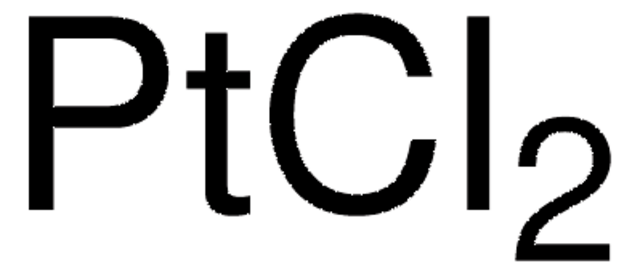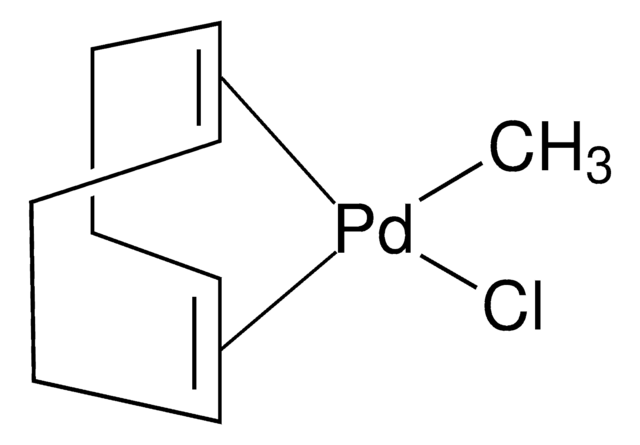Key Documents
282782
Platinum(II) acetylacetonate
97%
Synonim(y):
2,4-Pentanedione platinum(II) derivative, Pt(acac)2
About This Item
Polecane produkty
Poziom jakości
Próba
97%
Postać
solid
przydatność reakcji
core: platinum
reagent type: catalyst
mp
249-252 °C (lit.)
ciąg SMILES
CC(=O)\C=C(\C)O[Pt]O\C(C)=C/C(C)=O
InChI
1S/2C5H8O2.Pt/c2*1-4(6)3-5(2)7;/h2*3,6H,1-2H3;/q;;+2/p-2/b2*4-3-;
Klucz InChI
KLFRPGNCEJNEKU-FDGPNNRMSA-L
Szukasz podobnych produktów? Odwiedź Przewodnik dotyczący porównywania produktów
Opis ogólny
Zastosowanie
- In the preparation of N-allylanilines by the direct use of allylic alcohols. Anilines with electron-donating groups give good yields.
- For selective N-allylation of 2,3-disubstituted indoles in water.
It can be used as a starting material in the preparation of platinum-lead nanoparticles supported on carbon. The PtPb/C catalyst exhibits enhanced electrochemical activity towards methanol and formic acid oxidation.
Hasło ostrzegawcze
Warning
Zwroty wskazujące rodzaj zagrożenia
Zwroty wskazujące środki ostrożności
Klasyfikacja zagrożeń
Acute Tox. 4 Dermal - Acute Tox. 4 Inhalation - Acute Tox. 4 Oral - Eye Irrit. 2 - Repr. 2 - Skin Irrit. 2 - STOT SE 3
Organy docelowe
Respiratory system
Kod klasy składowania
11 - Combustible Solids
Klasa zagrożenia wodnego (WGK)
WGK 3
Temperatura zapłonu (°F)
Not applicable
Temperatura zapłonu (°C)
Not applicable
Środki ochrony indywidualnej
Eyeshields, Gloves, type P3 (EN 143) respirator cartridges
Wybierz jedną z najnowszych wersji:
Masz już ten produkt?
Dokumenty związane z niedawno zakupionymi produktami zostały zamieszczone w Bibliotece dokumentów.
Klienci oglądali również te produkty
Produkty
Magnetism and magnetic materials have been of scientific interest for over 1,000 years. More recently, fundamental investigations have focused on exploring the various types of magnetic materials and understanding the magnetic effects created by electric currents.
Nasz zespół naukowców ma doświadczenie we wszystkich obszarach badań, w tym w naukach przyrodniczych, materiałoznawstwie, syntezie chemicznej, chromatografii, analityce i wielu innych dziedzinach.
Skontaktuj się z zespołem ds. pomocy technicznej













